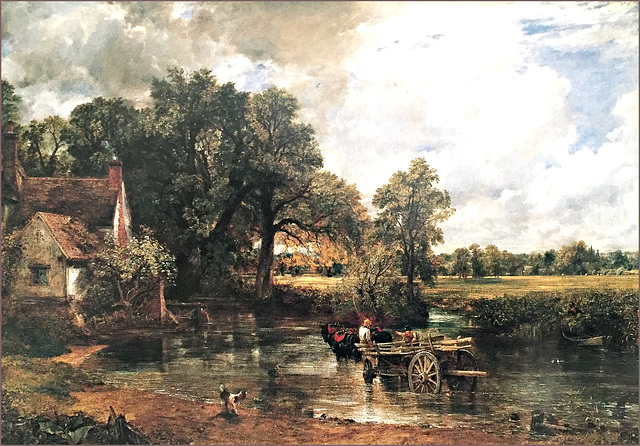^ ^
^ ^
^ ^
^ ^
^ ^
The Grand Constructors
Inflation
^ ^
^ ^
The Card Players
The Starry Night
The Haywain
^^
Gorbachev and Reagan
Map 4.1
The Boating Party
Le moulin de la Galette a Montmrtre
The Stone Breakers
The Threshing Floor
The Calais Pier
The Swing
China
Streetcar
Punishing Serfs
Marx
^ ^
^ ^
Art: A mirror of Society
The Anatomy Lesson ~ Rambrandt (CA 1632)
^ ^
^ ^
^ ^
^ ^
^ ^
Gleaners
^ ^
^ ^
Keywords
Authorizations, license
-
Visible by: Everyone -
Attribution + non Commercial
- Photo replaced on 21 Jun 2020
-
32 visits
The Haywain


John Constable (1776-1837) Even as the Industrial Revolution was transforming the land, the beauties of English countryside found their loftiest celebration in the landscapes of John Constable. England’s other great romantic painter. In sharp contrast to that of Turner, his nature was peculiarly harmonious, well maintained, and rich in spiritual values. The first artist of importance of paint outdoors, the bright pure colors of this 1821 masterpiece had a powerful impact on young French painters like Delacroix. (Reproduced by courtesy of the Trustees, The National Gallery, London)
- Keyboard shortcuts:
Jump to top
RSS feed- Latest comments - Subscribe to the comment feeds of this photo
- ipernity © 2007-2024
- Help & Contact
|
Club news
|
About ipernity
|
History |
ipernity Club & Prices |
Guide of good conduct
Donate | Group guidelines | Privacy policy | Terms of use | Statutes | In memoria -
Facebook
Twitter

What was Romanticism? Well, although the name may sound a bit lovey-dovey, as an art (and literary) movement Romanticism really had nothing to do with love or romance.
It DID have everything to do with emotion, however—Romanticism came about in the middle of the 18th century as a reaction to classical thoughts and ideas. Classicism was orderly, logical, and step-by-step, while Romanticism took a different approach by emphasizing emotion and imagination.
For example, in the same way that a “romantic” might long for “happily ever after” or believe strongly enough in a cause to fight (and perhaps even die) for it; Romanticism in art appealed to people on a deeper and different level than artwork had in the past.
Romanticism also had to do with a renewed look at nature and mankind’s relationship with it, making landscape paintings in particular much more important and popular as a result. The Haywain by John Constable, shown above, is a great example of that.
Constable’s paintings were so detailed, rich, and expressive that it’s almost like the landscape itself was exalted, even deified. Just look at the scale involved—the figure is tiny, and therefore relatively unimportant, while the world around him is glorious and beckoning with myriad sites and sounds to explore.
emptyeasel.com/2007/11/20/romanticism-the-emotional-art-movement-of-the-18th-and-19th-century